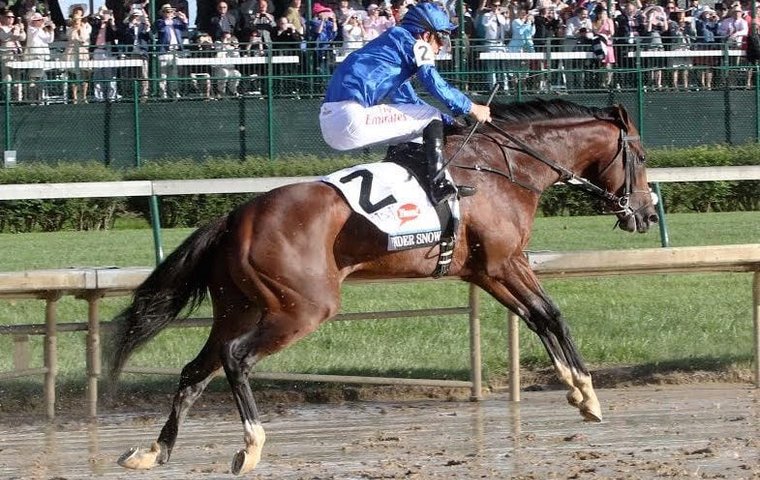
It can often have quite an impact on a horserace, especially when young, inexperienced Thoroughbreds are involved, but it may be even more of a factor than normal for the 147th running of the Kentucky Derby on Saturday: The noise of the crowd.
The contenders have done all their running so far in the era of Covid-19, with tiny numbers of spectators at most. Now, with Churchill Downs getting initial permission for 40-50 percent of reserved seat capacity (20,000 to 30,000 people), the young horses will be thrust into a noisy, sometimes rowdy environment they will not have experienced before. Some may handle it well. Some may not.
In fact, Churchill is hoping to have 60 percent reserved seat capacity on raceday, which could add another 5,000 to the total.
There are many examples of horses being affected by big-race atmosphere. Bob Baffert regularly uses ear plugs on his runners in big races to avoid the adverse impact of noise, although they were not enough to settle Dortmund, who was noticeably upset by the roar of the record crowd of 170,513 on the way to the gate during the post parade in 2015.
Both his entries last year reacted adversely to conditions, in fact. Thousand Words flipped over in the paddock about 20 minutes before post-time, breaking assistant trainer Jimmy Barnes’s wrist.
“He did misbehave in the paddock and was scratched after he fell over onto his side,” veterinarian Dr Kathleen Anderson said. “He’s returned to the stable and had a thorough examination by [his regular veterinarian].”
After winning the race, Authentic then swung around to knock Baffert and another off their feet in the winner’s circle as the connections posed for the win photo. This offers a cautionary tale for this year’s 3-year olds given that last year’s horses had more experience with crowds at 2 and 3 than the class of 2021.
In March 2017, Thunder Snow won the G2 UAE Derby and Godolphin had high expectations for the homebred Irish son of Helmet. He was shipped to Churchill Downs for the Derby one week before the race. Trainer Saeed bin Suroor noted, “The Kentucky Derby is a great race and one of the few major international contests Sheikh Mohammed and Godolphin have yet to win. Thunder Snow is a colt of the highest class and I hope that he can step up in the Kentucky Derby.”
Expectations were very high for the colt. Thunder Snow came out of post position 2 and, according to the chart, “was extremely rank, bucked hard, nearly unseating his rider in the first 16th, was pulled up and walked off.” According to on-call track veterinarian Dr Keith Latson, who examined the colt afterwards, there was no reason why, as Latson put it, “he didn’t break well.”
There could have been one reason, though: Crowd noise. Thunder Snow had been privy to fans at the Dubai Carnival, of course. However, the accommodations at Meydan have a capacity of 60,000, and the event marketing brags that it receives more than 50,000 fans from around the world on Dubai World Cup day. In 2017, the Kentucky Derby featured a crowd of 158,070, which would have been about 100,000 more than Thunder Snow had ever faced before.
In 2004, one of North America’s racing cathedrals, Belmont Park, had a record capacity crowd of 120,139 when Smarty Jones was making his bid for the Triple Crown in the Belmont Stakes. Granted Smarty Jones had run before a crowd of 140,054 at Churchill Downs, but he was noticeably rank heading to the start, and unlike the Kentucky Derby gate, which is at the top of the stretch, the stalls for the Belmont are right at the finish line in front of both the clubhouse and grandstand.
Smarty Jones never settled in the race. While the tactics of some of the other riders contributed to the result, he never seemed comfortable.
The pandemic changed all this.
In 2020, most tracks after March were closed to spectators. This means that the traditional acclimation of horses to the human aspect of racing did not occur.
Except for limited venues like Monmouth Park and Delaware Park, which allowed 1,000-5,000 patrons for their summer meets on a first-come-first-served basis, crowds were not present when the horses broke their maidens, entered stakes company for the first time, or even competed in the Breeders’ Cup at Keeneland.
Even without a capacity crowd on Saturday, this year’s runners will all be facing a level of noise and atmosphere like nothing they will have experienced before.


